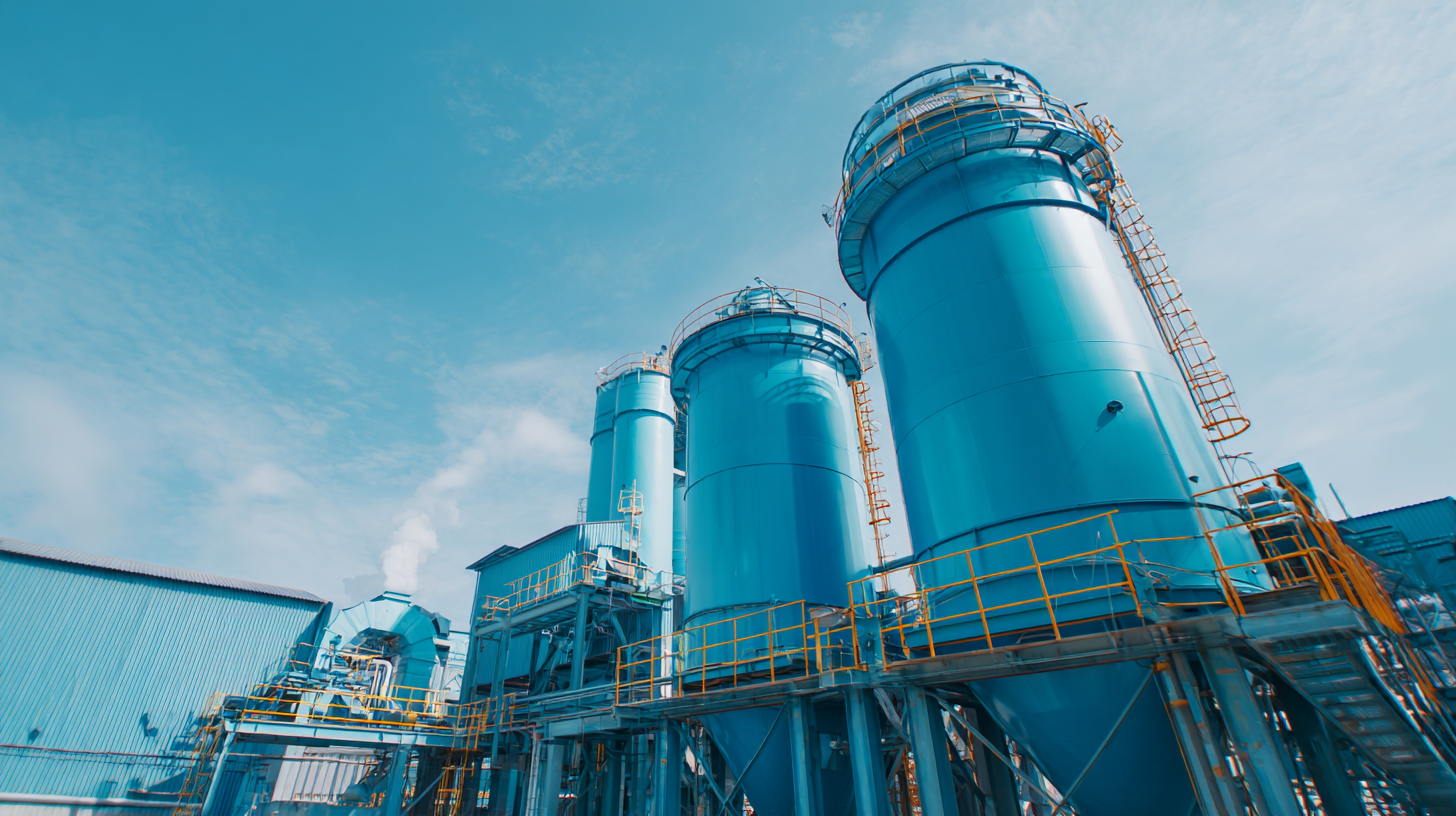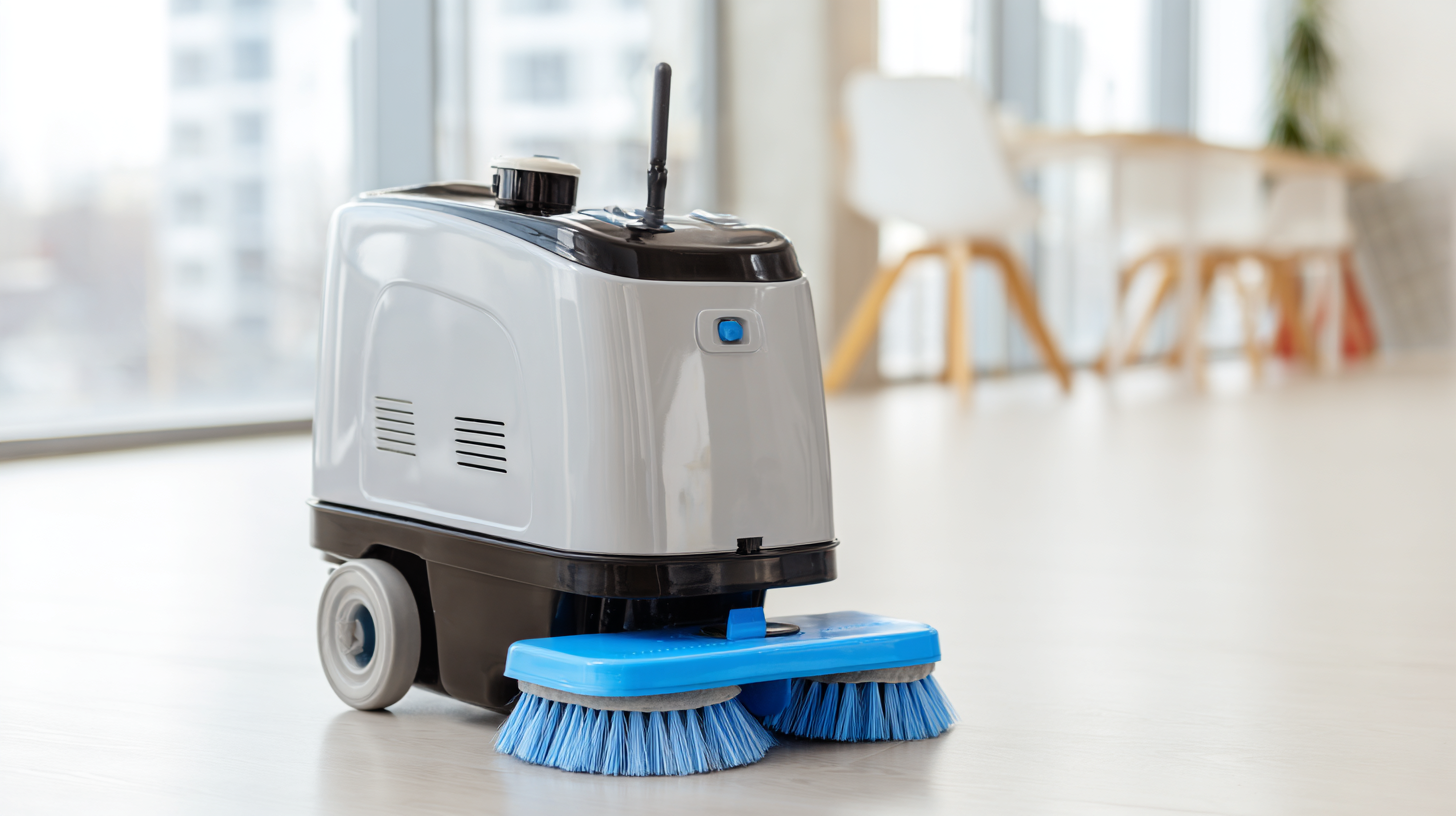Inquiry
Form loading...
In today’s competitive industrial landscape, maximizing operational efficiency is paramount, particularly in sectors reliant on clean air and effective waste management. The use of Small Scrubber systems has emerged as a critical solution in addressing environmental standards while optimizing production processes. According to the latest report from the Environmental Protection Agency (EPA), over 70% of industrial facilities are now mandated to implement advanced scrubber technologies to comply with stringent air quality regulations. These small yet powerful devices not only enhance air purification but also contribute significantly to energy conservation and cost reduction. As industries strive to meet both productivity goals and environmental compliance, understanding the best strategies for integrating Small Scrubber technologies is essential for sustaining operational excellence and meeting regulatory expectations.

In various industries, the implementation of small scrubber technology is proving to be a game-changer, particularly in sectors such as manufacturing, maritime, and agriculture. According to a recent report, small scrubbers can reduce harmful emissions by up to 80%, significantly contributing to environmental compliance while enhancing operational efficiency. The manufacturing sector is set to leverage this technology to meet stricter regulations without sacrificing productivity, as the focus on sustainability intensifies.
Moreover, the maritime industry is experiencing an upsurge in the adoption of small scrubbers due to new environmental legislation. The International Maritime Organization estimates that the use of scrubbers could help reduce sulphur emissions from ship engines by millions of tons annually, thereby protecting marine ecosystems and ensuring compliance with international standards. Additionally, agricultural operations are discovering that small scrubbers can mitigate the release of ammonia and particulate matter, leading to healthier working conditions for employees and improved product quality.
Integrating small scrubber technology could serve as an essential strategy for these key industries, allowing them to not only enhance efficiency but also demonstrate their commitment to sustainability. As the landscape of business continues to evolve, it is clear that innovative solutions like small scrubbers will play a crucial role in driving industry advancements and compliance with environmental standards.

When utilizing small scrubber systems, users often encounter several common challenges that can hinder their efficiency. One of the primary issues is the inadequate understanding of the machine's specifications and capabilities. Users may choose a scrubber that doesn't align with the specific needs of their cleaning tasks, leading to suboptimal performance. To mitigate this, it’s crucial to conduct a thorough assessment of your cleaning environment and requirements before selecting a scrubber. This ensures that the right type and size of equipment are used, enhancing overall effectiveness.

Another frequent challenge is maintenance. Small scrubbers, like any cleaning machine, require regular upkeep to operate at peak performance. Neglecting routine maintenance can lead to a decrease in cleaning efficacy and increased operational costs. To address this, users should establish a maintenance schedule that includes regular inspections, cleaning, and part replacements as needed. Additionally, consider training staff on proper usage and maintenance procedures to extend the lifespan of the scrubber and improve cleaning results.
Finally, users may struggle with maneuverability in tight spaces. Small scrubbers are designed for compact areas, but navigating them can still be tricky. To optimize efficiency, it’s beneficial to practice techniques for maneuvering the scrubber in confined spaces. Familiarize yourself with the equipment’s controls and weight distribution to improve handling. Investing time in training can also empower users to tackle challenging areas with confidence and efficiency.
Implementing small scrubbers effectively across various sectors can greatly enhance environmental cleaning efforts. Recent commentary highlights the importance of identifying barriers to adopting cleaning technologies in different regions, noting challenges such as insufficient funding and lack of awareness. This is particularly relevant in sectors where workers' health is paramount, including healthcare, where the deployment of small scrubbers can improve air quality and reduce exposure to harmful pollutants.
Tips for successfully implementing small scrubbers include starting with an assessment of air quality needs specific to your environment. Invest in training sessions for staff to understand the optimal use of scrubbers, ensuring that workers are engaged and aware of their benefits. Additionally, organizations should establish feedback mechanisms to evaluate performance over time, allowing for adjustments that can maximize efficiency and effectiveness.
Sector-specific practices can further enhance the implementation process. For instance, in the food industry, integrating small scrubbers during production can significantly help maintain hygiene standards while reducing airborne contaminants. By leveraging these technologies, sectors can contribute to broader environmental goals while simultaneously protecting the health and safety of their workers.
Maximizing efficiency in cleaning operations has become paramount in today's fast-paced environment, especially when utilizing small scrubbers. Recent industry reports highlight that small scrubbers can improve cleaning productivity by up to 25% compared to traditional methods. This increase can be attributed to innovative design and technology integration that allows operators to navigate tight spaces while maintaining high cleaning standards.
To fully leverage the potential of small scrubbers, operators should consider implementing advanced features such as automated controls and real-time monitoring systems. According to a study by the Cleaning Industry Research Institute, facilities that adopted small scrubbers equipped with intelligent sensors reduced water and cleaning solution usage by 30%, which not only lowers operational costs but also promotes environmental sustainability. By prioritizing technological advancements, businesses can ensure that their small scrubbers deliver maximum efficiency and contribute significantly to overall productivity in their cleaning operations.
In today's competitive environment, businesses are continually seeking ways to enhance operational efficiency. Small scrubbers have emerged as a vital tool for various industries, and real-world case studies illustrate their effectiveness in achieving this goal. For instance, a recent case at a manufacturing plant demonstrated how implementing small scrubbers not only improved air quality but also significantly reduced downtime caused by equipment cleaning. This led to a 20% increase in productivity, showcasing how these machines can be a game-changer for operational workflows.
When considering the use of small scrubbers, here are some tips to maximize their efficiency. First, ensure regular maintenance and prompt repairs of the scrubbers to prevent any performance degradation. Keeping the machines in optimal condition allows for consistent cleaning results. Second, train staff on the best practices for using scrubbers, including the correct settings based on the floor type and the nature of the dirt. Empowering employees with the right knowledge can enhance the effectiveness of the cleaning process. Finally, integrate small scrubbers into your daily cleaning routines to streamline operations, leading to not only cleanliness but also sustained employee morale and productivity.
This bar chart showcases the efficiency rates of different small scrubber models based on real-world case studies. The data reflects the average efficiency improvements achieved through the implementation of these scrubbers in various industries.
